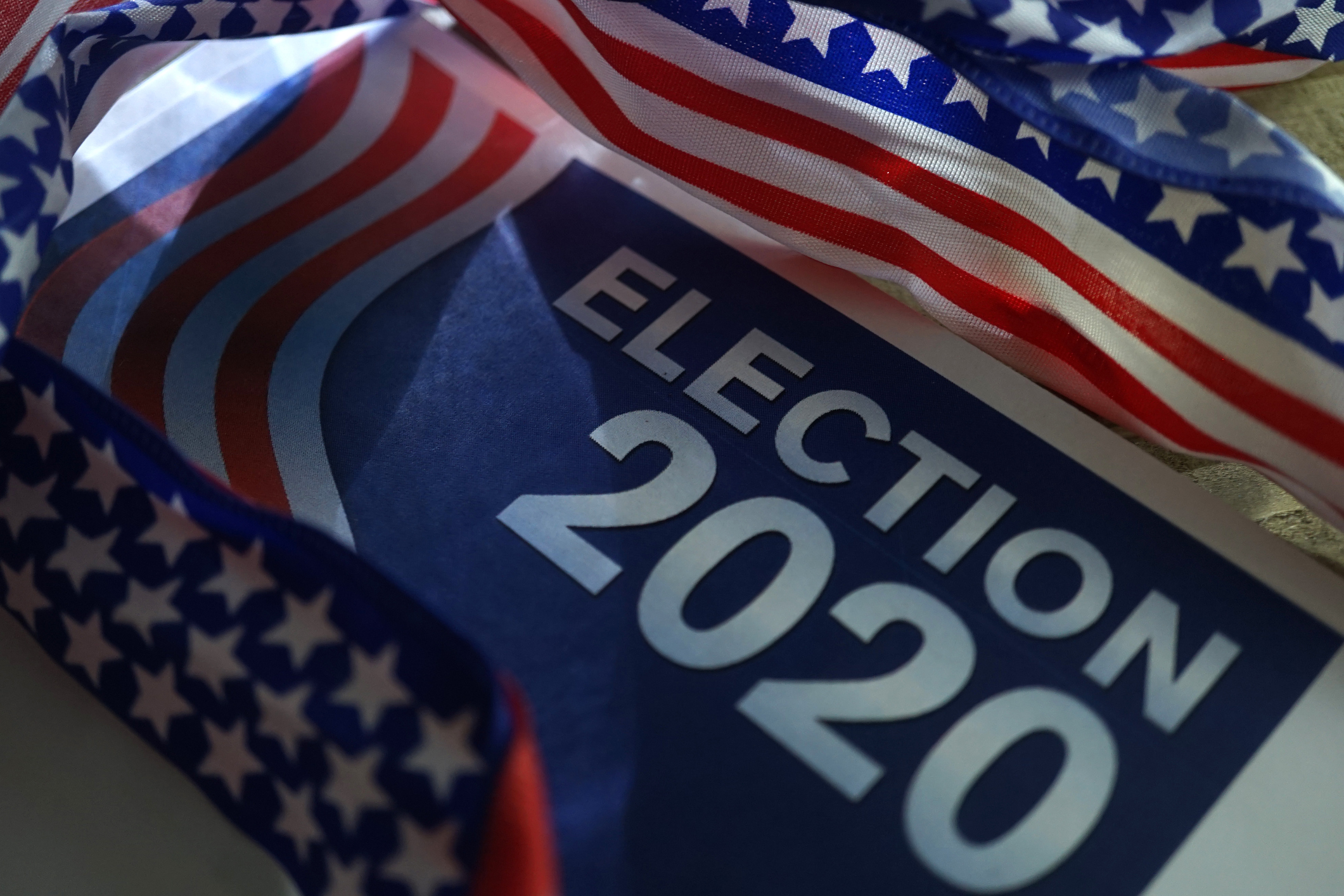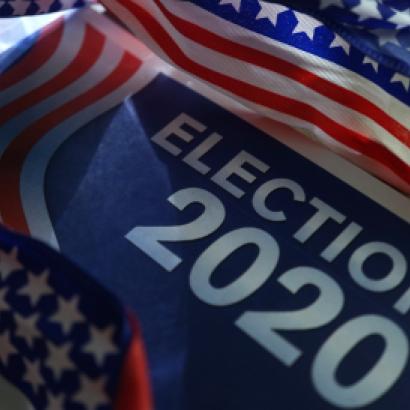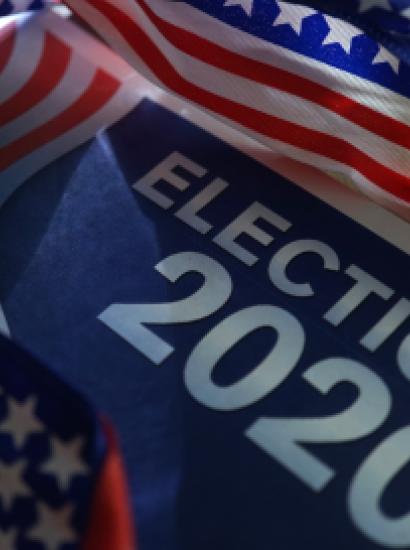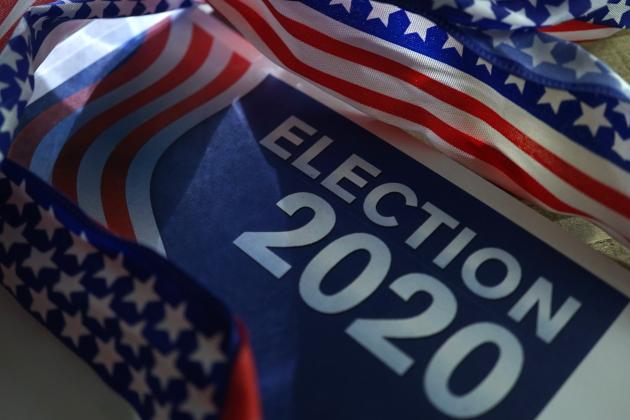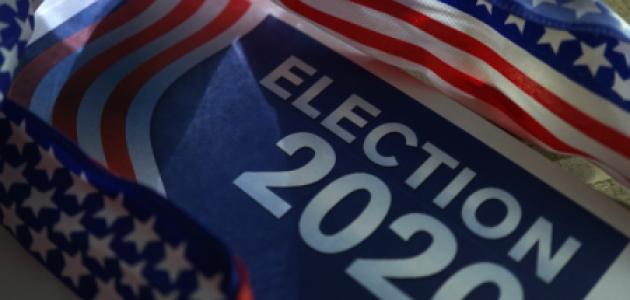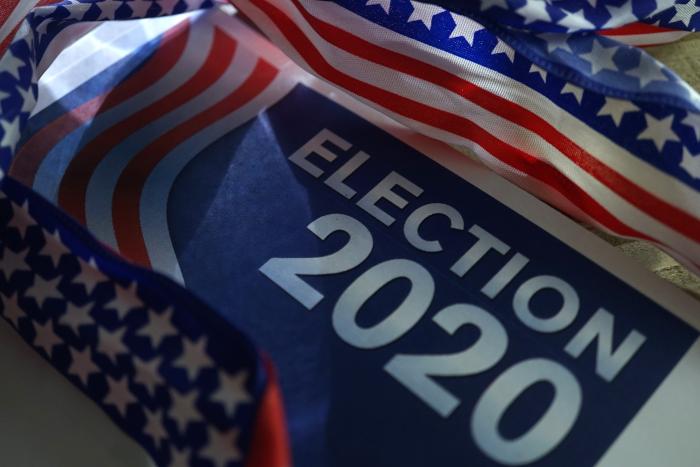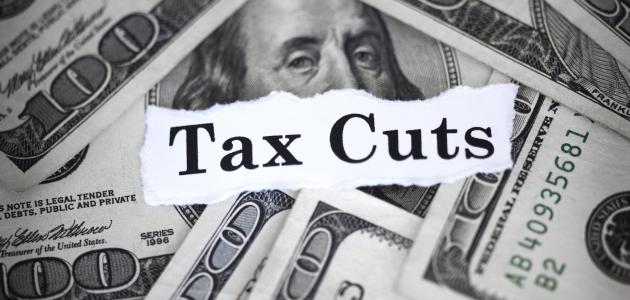
by Jonathan Movroydis
In this conversation, Senior Fellow Justin Grimmer talks about his new research paper that analyzes and challenges allegations of voter fraud during the 2020 presidential election. Grimmer addresses allegations such as the improbability of Joe Biden’s victory on the basis that he won fewer counties than Donald Trump, including “bellwether” counties that have accurately predicted every presidential election winner since 1980. Grimmer refutes charges that there was a large quantity of fraudulent mail-in ballots, and that Dominion voting machines flipped massive number of votes from Trump to Biden.
Tell us why you conducted this study on the 2020 presidential election.
We saw a number of claims being made that suggested that the 2020 presidential election wasn’t conducted fairly and that something broke down within the election administration. These questions almost always arise following elections, but not necessarily with the same sort of intensity as in 2020. In prior elections, there have been concerns that certain laws unfairly exclude categories of people or that fraud is rampant in specific counties, cities, and precincts. I codirect the Democracy and Polarization Lab, where we focus on exactly these kinds of questions. We’re interested in a lot of different topics, including how voting is administered and what policies can be developed to ensure free and fair elections.
It was natural for us to be interested in addressing some of the allegations that were being made. Our study began when we looked closely at a paper from economist John Lott, who was interested in explaining what he viewed as disparities in absentee vote returns for Joe Biden in Pennsylvania and Georgia. What we found by looking at Lott’s original data set was that, in fact, a very basic statistical error drove his results. He was interested in how Biden’s vote share among absentee ballots in “suspect” counties compared to his vote share among absentee ballots in “non-suspect” counties. As we explain in our paper, Lott’s conclusions depended on the order counties were included in his data set. Once we correct the model to remove the dependence on this arbitrariness, we found that there was no evidence of fraud. We then expanded our analysis to address other claims made in Lott’s paper about turnout and then claims made in many other analyses.
Did mail-in ballots, as President Trump and his allies allege, drastically impact how the election was administered?
We certainly saw, in states like Pennsylvania, bipartisan legislation that allowed for increased mail-in voting because of the COVID-19 pandemic.
Research from our lab provides some reason to believe that paper ballots are a secure way to vote. A paper by the codirector of our lab, Andy Hall, and several lab members, shows that in the state of Washington there were incredibly low rates of votes cast by deceased individuals from paper ballots. What we found is that if data scientists don’t do a careful job of removing voters who have similar names and the same birthdays, they may reach the incorrect conclusion that there are actually a lot of dead people voting.
Some have made the claim that Biden’s vote totals are improbable because he won more votes than Obama in 2008 and Trump in 2016. They find it mystifying that Biden beat Obama’s vote total in 2008, despite the latter being a much more electrifying candidate. They therefore conclude that Biden’s huge vote total must be fraudulent. Does this allegation have merit?
First, let’s just take on that idea that Biden got more votes than Obama, which is true. Donald Trump in this election also got more votes than Obama in 2008. There was an incredible amount of voter turnout. However, of the people who turned out to vote, a higher proportion of them voted for Barack Obama in 2008 than for Joe Biden in this election.
A second sort of related claim is that Biden could not have won, since he carried fewer counties than Trump in the 2020 election. Certainly in 2016, after Trump won, he pointed out that he won a large share of counties. This is undeniably true. But the important context is that over the last 20 years Republican support is increasingly spread out over a large number of relatively sparsely populated counties.
By contrast, Democratic support is increasingly concentrated in a small number of highly populated urban counties. Thus, we have a growing urban-rural divide in American politics. It’s not just the case that Biden won these big counties by some small percentage point, he won them by a lot.
The other related allegation we heard is that the crowds Trump drew dwarfed Biden’s, which implies that Biden could not have received a higher vote total. I think this is one of the most vexing issues to talk to people about. Political scientists don’t have evidence that enthusiastic crowds imply stronger election-day performance. It may, but it also could be the case that Trump captured support from a relatively intense but small base, and that a large number of moderate voters weren’t excited about him.
There are maybe 20,000 people who attend Trump rallies in a state that has 6 million voters. That 20,000 is a relatively small share of votes that Donald Trump would receive in a state. The typical voter is not going to attend a rally.
Trump and his allies, however, argued that they weren’t just playing base politics in this election. They maintained that they picked up support from significant proportions of Black and Hispanic voters.
Trump is very proud of the fact that it looks like he received a higher share of the Black and Hispanic votes than other Republicans have received in quite some time. That claim is actually slightly counterintuitive. The first argument I would make is that the Hispanic vote is not monolithic. There are a number of groups that comprise the Hispanic population. Trump did amazingly with Cubans in Florida, which is a big part of the story about how Trump won Florida so handily. If you look at counties where Trump picked up the most votes, they are on the Rio Grande in Texas, which is another really fascinating dynamic. In other places, however, Trump didn’t do particularly well among the Hispanic population.
Even though Trump had a larger proportion of Black and Hispanic votes, it turns out that he still lost a greater number of these votes in this election than he had in 2016.
The reason is that these groups turned out in larger numbers.
Exactly. There are more voters in those demographics that went for Biden than went for Hillary Clinton in 2016.
The other allegation you address in your paper is that Biden had a low probability of winning the presidency since he captured only one of the eighteen bellwether counties that have determined the winner of every election since 1980. Are we to take stock in these bellwethers, and if so, what makes this election different from past ones?
If someone told you that they were going to pick 10 stocks based solely on their positive performance over the last 10 days, that probably wouldn’t be the most prudent investment strategy. The reason is that these stocks were picked purely based on trends and not for their quality. It’s very possible that those same stocks could tumble over the next 10 days. For the same reasons, bellwethers can’t accurately predict winners of an election.
There is this conception that bellwether counties are a microcosm of the United States, meaning that as the country drifts politically in one direction, so do these counties. This might have been true perhaps in the sixties and seventies, when there were a series of elections that were effectively blowouts. Subsequently, elections have been extremely close. In two recent elections, 2000 and 2016, the popular-vote winner and the electoral-college winner have been different candidates. There is also the fact that Democrats have been winning fewer counties as a result of their voters being concentrated in larger metropolitan areas.
We also show that part of the reason for Biden’s poor performance among bellwethers was that Trump won bellwethers in 2016 by a large margin. Based on Trump’s performance in 2016, we show that Biden was only expected to win one to two bellwether counties, because presidential candidates tend to not win counties the other party’s candidate won by a large margin in the previous election.
The president and his aides argue that in large metropolitan areas like Detroit, Milwaukee, Philadelphia, and Atlanta, there were late-night dumps of mail-in ballots that almost all went for Biden. Again, the conclusion here is that there was voter fraud in these large cities where Democrats oversee the election administration. If this is accurate, do such dumps of mail-in ballots indicate possible voter fraud?
This is a really interesting claim. First, there is this allegation that the vote counting stopped everywhere. I don’t know that it happened in any other city, except in Atlanta at the State Farm Arena. However, as a pure statistical issue, there are spikes in election returns because counties report all their results at the same time and larger counties take longer to count ballots. Many state legislatures have also mandated that ballots can’t be opened until election day. By the time the counting ends in these various cities, often past midnight, there are a lot of ballots being reported.
A number of academic papers have been written about the phenomenon of a red mirage and a blue shift. In highly contested elections it looks like Republicans have the lead early on (red mirage), and then the blue shift occurs when the mail-in ballots, which are historically cast by Democratic voters, start to be counted. These are dynamics that are well-understood by reputable news agencies and their decision desks.
Trump and his allies basically said to Georgia’s state leadership that if this wasn’t a fraud, prove it through a full signature audit of mail-in-ballots. Georgia governor Brian Kemp and secretary of state Raffsenberger turned down this request. If a full signature audit were granted, could this have changed the outcome of the election?
An audit was conducted in Cobb County and discovered two signatures that were potentially in error. In that audit, they found no examples of the type of fraud being alleged by the Trump campaign. States are coming back showing no dead people voted, no underage people voted, and no illegal aliens voted.
In the field of statistics, there is always the concern that if we let humans loose on a dataset, they will identify multiple patterns, many of which are false. In this case, many people came up with a lot of reasons to believe the election was stolen. Consequently, data analysts need to be able to accurately identify if there is something systematic in the data or if it is just noise.
Will you tell us about your analysis of allegations that Dominion voting machines flipped large numbers of votes for Joe Biden?
The Dominion issue was first raised in Antrim County, Michigan, where there was a vote reporting error. It wasn’t a Dominion error. It was an error by a clerk who entered the data incorrectly into a Dominion machine. Trump allies have seized on this issue and claimed that the machines were designed to enable systematic fraud. However, they have now backed off these claims since they are facing hefty defamation lawsuits brought by Dominion.
One version of this claim that we analyzed is whether there is evidence that Biden performed better where Dominion machines counted votes. However, we find that there’s no difference between locations that used Dominion machines and others that did not in the Biden vote returns.
There is also a related claim that we will actually address in an addition to the paper. It’s from Shiva Ayyadurai, a candidate who ran for the Republican nomination for a seat in the Massachusetts State Senate. He has built quite a following propagating voter-fraud claims. He argues that his race was decided by Dominion machines, even though he lost 59 percent to 39 percent in the Republican primary for Massachusetts Senate. We show that these claims are baseless.
He also alleges that in Michigan, he has evidence that Trump lost votes from Dominion machines. He argues that there is an odd relationship between straight-ticket and split-ticket voters in Michigan. Specifically, Ayyudrai plots the difference between the share of votes for Trump from split tickets and straight tickets against Trump’s share among straight-ticket voting. He argues that the negative relationship he finds is ``odd.” However, Ayyadurai actually demonstrates a well-known phenomenon called “regression to the mean.” We show that if Trump had the same underlying support in straight-ticket and split-ticket votes, but if there is statistical noise, then you get exactly the pattern Ayyudrai calls “odd.”
The Dominion case is one that actually looks like something that might show up in a social-science seminar. Trump’s allies and Ayyadurai missed some rudimentary analytical steps that we would have instructed our students to follow.
Will you tell us about the claim that there were more votes than voters in the United States?
This is the most egregious claim. This allegation comes from a viral set of tweets President Trump pushed and various news outlets circulated. The person who initially asserted this claim, in fact, confused different turnout rates. The Washington Post published the turnout rate in 2020, which was quite high but was proportional to the voting-eligible population. This person asserts that the Washington Post’s figures were for turnout rate among registered voters, and that President Trump’s 74 million votes didn’t leave enough voters to accommodate all the votes Biden received. The obvious error there is that the turnout rate should be among the bigger set of people, the voting-eligible population.
There are others that are based on obvious human errors. In Pennsylvania, state legislators made two different claims. One is that there are discrepancies in the number of votes counted. It turns out that discrepancies exist because they forgot to add 170,000 provisional ballots, which were ultimately deemed valid.
Another example was an allegation made in a lawsuit that there were more votes than voters in Michigan. However, a conservative blogger pointed out that all the townships that they identified were actually in Minnesota, not Michigan, and so none of them were relevant to the Michigan disputes.
Many of these discrepancies are normal even in Republican-dominated states. For example, Wyoming maintains very tight control of its state voter list. If a person sits out a federal election, they are removed from the voter list and they are no longer a registered voter. At the same time, it’s very easy to register to vote on the day of the election.
If one reviews Wyoming ‘s official turnout statistics, the state computes turnout rates of something like 107 percent, because many people register to vote on the day of the election and failed to participate in the previous one. In states that have same-day registration, that’s why it appears that there are more votes than voters.
Does the whole controversy suggest that because so many Republicans lack confidence in the election procedures there should be some type of electoral reform in the United States?
That’s a great question, and it’s really at the heart of the research that we’re conducting in my lab group. I think both Democrats and Republicans would agree that they would like to see changes made to the administration of US elections. In my heart of hearts, I’d like to believe that there’s room for compromise. I think it would be a shame to take steps to address concerns about voter fraud when those concerns emerge from what looks like a rather intentional effort to sow distrust in the elections. For example, policy makers can make a number of these changes, then the next election a candidate could allege that the election was still unfairly administered.
I believe there are a number of ways that we can make elections more transparent. In Ohio and Texas, for example, election officials enabled mail-in ballots to be counted before election day. In those states, the vote count wasn’t delayed until late in the night on election day nor did it drag on for weeks. Simple reforms such as this, I believe, can increase voter trust in election administration.
I also believe it would be helpful for skeptical citizens to better understand how elections are administered. I would encourage them to volunteer as poll workers and see how the process works at their local polling station. I think people would come to the realization that elections are much more secure than they originally believed.







